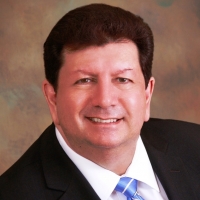I have an aviation project in Florida. Recently, some of our funding fell through. We are looking into EB-5 as an alternative funding source and were wondering how much of the capital stack for the project should be comprised of EB-5 funds? We have put quite a bit of our own money into the project and also have some private investors.
Answers

Lei Jiang
EB-5 Immigration attorneysThere is no requirement as to the percentage of the EB-5 funds in any given project.

Rohit Kapuria
EB-5 Immigration attorneysThis is generally a marketing question. Many migration agents and investors prefer a job cushion of at least 20 percent. For example, if the total job creation is 120 jobs (which would permit 12 investors), keep the maximum raise to 10 investors with a cushion of 20 jobs. There is no golden standard on the percentage of the capital stack, however, some EB-5 marketing specialists believe in the 35-30-35 rule, i.e. 35 percent equity, 30 percent EB-5, and 35 percent other conventional sources (including public financing options and senior debt). ]

Salvatore Picataggio
EB-5 Immigration attorneysIt depends, of course. Many projects have a 50/50 stack. Some are 100 percent EB-5 funded. We would review your legal and financial infrastructures for compliance and marketability as well as prepare and review any supporting documentation.

Ed Beshara
EB-5 Immigration attorneysThe requirement for a non EB-5 capital stack amount is more for a marketing reason and not EB-5 compliance. The investors usually like to see the project put in their own money besides the Eb-5 money. The ratio could be 40 percent non EB-5 compared to 60 percent EB-5 funding.

Fredrick W Voigtmann
EB-5 Immigration attorneysThere is no one size fits all answer to your question. It depends upon the specifics of the project. Everyone agrees that EB-5 money should not comprise 100 percent of the project funding. Most projects aim for between 30 percent and 50 percent, but the more you rely on EB-5 funding, the harder the project is to market. There are many factors that go into marketing efforts, so the success will depend on how attractive (protection of principal and likelihood of green card approval, i.e., business plan and job creation) your project will be to potential EB-5 investors. It is good that you have a large amount of your own money in the project because that demonstrates your level of commitment and belief in the project.

John Tishler
EB-5 Securities AttorneysThis is a good question, but unfortunately there is no single answer. Generally, EB-5 investments are more attractive to investors when there are greater amounts of sponsor equity and other equity that is junior in collateral or payment priority to the EB-5 capital. However, the correct amount of EB-5 capital depends not only on the amount of sponsor and other equity capital, but also on the overall risk of the project based on its industry and cash flow projections, the job cushion that results from comparing the amount of EB-5 capital to the number of jobs modeled in the economic report, and the amount of any capital in the project that is senior to the EB-5 capital in collateral or payment priority. There are also legal issues under the U.S. Investment Advisers Act and the Investment Company Act related to the amount of EB-5 capital raised. These issues have often been overlooked in this industry. The correct amount of EB-5 capital also depends on the expectations of the investors, which has changed over time and will always depend on which investor audience will be targeted. As project finance lawyers specializing in EB-5, we discuss the question you have asked early and often, and we encourage our clients to speak with broker-dealers and/or foreign marketing agents early in the planning process.

Igor Serbinin
EB-5 Immigration attorneysIt does not matter how much EB-5 funds will be in your project as long as it meets the requirements of minimum investment. If your capitalization is, for example, $20 million, one investor with $1 million (unless you are in TEA then $500k.) will make him eligible for this immigrant classification. In other words, the ratio of private vs. investor money does not matter as far as eligibility goes. It looks like a straight direct investment project.

Matthew T Galati
EB-5 Immigration attorneysFortunately, the regulations allow job creation to be credited only to the EB-5 investors. For example, if the project is 1 percent EB-5 funds and 99 percent non-EB-5 funds, the EB-5 investors can credit job creation from 100 percent of the capital stack. So your question is not so much of a legal one as it is a marketing one, and the answer would depend upon individual investors and agents preferences.
DISCLAIMER: the information found on this website is intended to be general information; it is not legal or financial advice. Specific legal or financial advice can only be given by a licensed professional with full knowledge of all the facts and circumstances of your particular situation. You should seek consultation with legal, immigration, and financial experts prior to participating in the EB-5 program. Posting a question on this website does not create an attorney-client relationship. All questions you post will be available to the public: do not include confidential information in your question.






